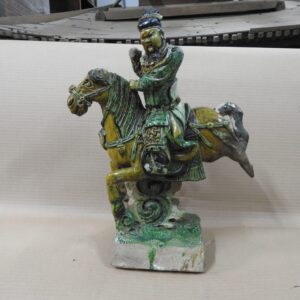Mouth organ sheng
A sheng of Southeast Asian origin. The sheng is considered one of the oldest Chinese instruments. Depictions of sheng-like instruments are said to date from as early as 1100 B.C., while the instrument appears to have been in use as early as the Han Dynasty (202 B.C.–A.D. 220). Several similar musical instruments have evolved from the Chinese instrument, such as the Japanese shō 笙 and Korean saenghwang 생황, and they are also found in parts of Thailand, Laos, and Vietnam. This is a traditional sheng 笙, probably dating from the late 19th or early 20th century. It has 17 bamboo pipes, stylised ivory openings in the lower part of the resonant body, and an ivory mouthpiece. The body and the part up to the mouthpiece are painted black. The pitch is determined by pressing the fingers on the holes of the pipe. The pipes come in five different lengths and are arranged to represent the wings of a phoenix. The tips of the pipes, especially the ... more
A sheng of Southeast Asian origin. The sheng is considered one of the oldest Chinese instruments. Depictions of sheng-like instruments are said to date from as early as 1100 B.C., while the instrument appears to have been in use as early as the Han Dynasty (202 B.C.–A.D. 220). Several similar musical instruments have evolved from the Chinese instrument, such as the Japanese shō 笙 and Korean saenghwang 생황, and they are also found in parts of Thailand, Laos, and Vietnam. This is a traditional sheng 笙, probably dating from the late 19th or early 20th century. It has 17 bamboo pipes, stylised ivory openings in the lower part of the resonant body, and an ivory mouthpiece. The body and the part up to the mouthpiece are painted black. The pitch is determined by pressing the fingers on the holes of the pipe. The pipes come in five different lengths and are arranged to represent the wings of a phoenix. The tips of the pipes, especially the highest ones, are covered with horn. A traditional form of the instrument accompanies folk songs and is occasionally used in some forms of Chinese opera. It is also played in traditional ensembles, such as wind and percussion bands in northern China. (KH)



































Do you have a comment or additional information about the subject?